Everest Base Camp: A Trekker’s Paradise Awaits
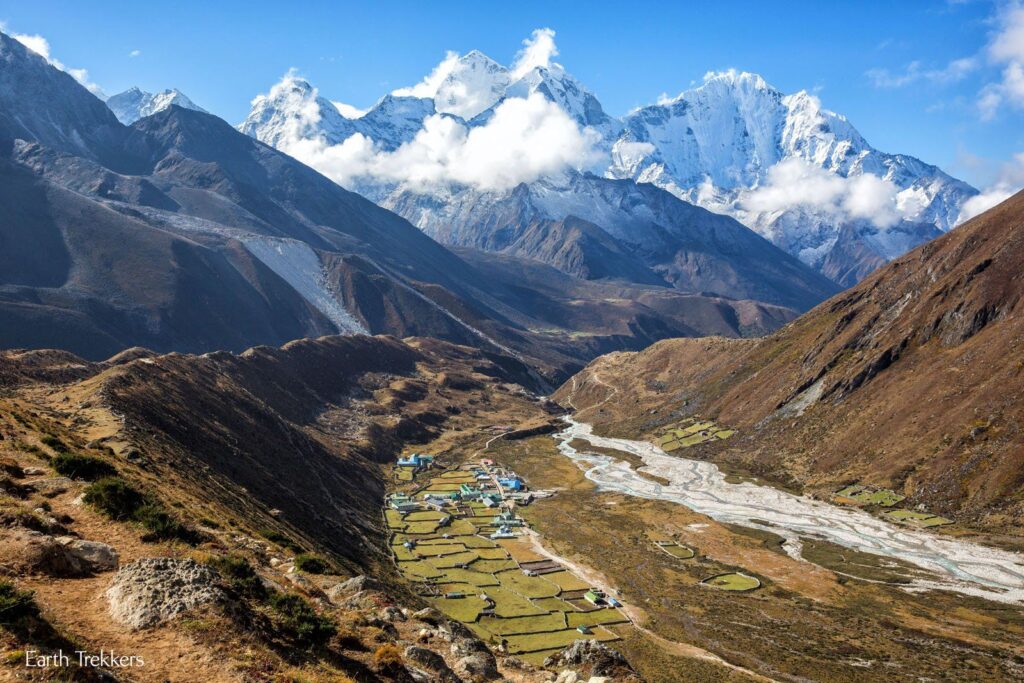
An Essential Guide to Visiting Everest Base Camp
Nestled in the heart of the majestic Himalayas, the Everest Base Camp Trek is more than just a hike; it’s a transformative journey that beckons adventurers from every corner of the globe. As you lace up your trekking boots and prepare to traverse the rugged paths that lead to the foot of the world’s highest peak, you’ll find yourself enveloped in a tapestry of breathtaking landscapes, vibrant Sherpa culture, and the exhilarating thrill of exploration.
Each step along this iconic trail is steeped in history and natural beauty, where ancient monasteries perch on mountainsides and the air is filled with the whispers of the past. From the bustling streets of Kathmandu to the serene villages of the Khumbu region, your adventure unfolds against a backdrop of towering peaks and the ever-present silhouette of Everest, standing tall at 29,032 feet (8,848 meters).
Whether you seek the camaraderie of fellow trekkers, the challenge of high-altitude hiking, or simply the chance to witness the awe-inspiring grandeur of the Himalayas, the trek to Everest Base Camp is a rite of passage that promises to leave an indelible mark on your soul. Prepare to embark on a once-in-a-lifetime adventure that will test your limits, ignite your spirit of adventure, and reward you with views that many only dream of. Welcome to the ultimate trekking experience—where the journey is just as magnificent as the destination.
In This Guide
- An Essential Guide to Visiting Everest Base Camp
- The Rich History and Legends of Everest Base Camp
- Main Highlights: What You Absolutely Can’t Miss
- Planning Your Visit: A Practical Guide
- Tickets: Prices, Booking, and Tips
- How to Get There: A Complete Transportation Guide
- Local Cuisine and Accommodation Nearby
- Frequently Asked Questions
- Final Thoughts on Your Trip
The Rich History and Legends of Everest Base Camp
The story of Everest Base Camp is woven with the threads of ambition, exploration, and local lore, encapsulating a rich tapestry that attracts adventurers from around the globe. The area’s history stretches back to the early 20th century when the world first turned its gaze toward the majestic peak of Mount Everest.
In the 1920s, a team led by the intrepid British climber George Mallory embarked on one of the first serious attempts to map the north face of Everest. This expedition, while groundbreaking, did not establish a permanent base camp, and Mallory’s fate remains a mystery, sparking endless debate about whether he reached the summit before his untimely demise. The north route was effectively closed off following the Chinese invasion of Tibet in 1949, leaving the south route in Nepal open for exploration.
The true turning point in the history of Everest Base Camp came in 1953 with the celebrated expedition of Sir Edmund Hillary and Tenzing Norgay. These two legendary figures made history when they became the first climbers confirmed to have reached the summit of Everest. Recognizing the need for a reliable supply point for their climbing gear, they established what we now know as Everest Base Camp on the southern slopes. This strategic decision not only facilitated their ascent but also laid the groundwork for future expeditions aiming to conquer the world’s highest peak.
Over the decades, as the popularity of trekking and mountaineering surged, Everest Base Camp transformed from a mere logistical point into a pilgrimage for trekkers and climbers alike. It has become a rite of passage for many, symbolizing personal and physical challenges while offering breathtaking views of the surrounding peaks, including the Khumbu Icefall.
The local Sherpa community, with its profound connection to the mountain, has played an integral role in this narrative. The Sherpas’ expertise in navigating the treacherous terrain and their rich cultural heritage have made them invaluable companions for trekkers. Their stories, steeped in Buddhist beliefs, speak of the mountain as a sacred entity, embodying both reverence and respect for the natural world.
Legends abound in the valleys surrounding Everest. Tales of the Yeti, a mythical creature said to roam the high Himalayas, continue to captivate the imagination of trekkers. Local folklore also tells of spirits that guard the mountain and the surrounding lands, emphasizing the deep spiritual connection the Sherpa people have with their environment.
Today, Everest Base Camp stands not only as a destination for climbers aiming for the summit but also as a cultural crossroads where hikers from diverse backgrounds converge, each bringing their own stories and aspirations. The journey to EBC is not just a trek but a passage through history, myth, and the enduring spirit of exploration that defines the human experience.
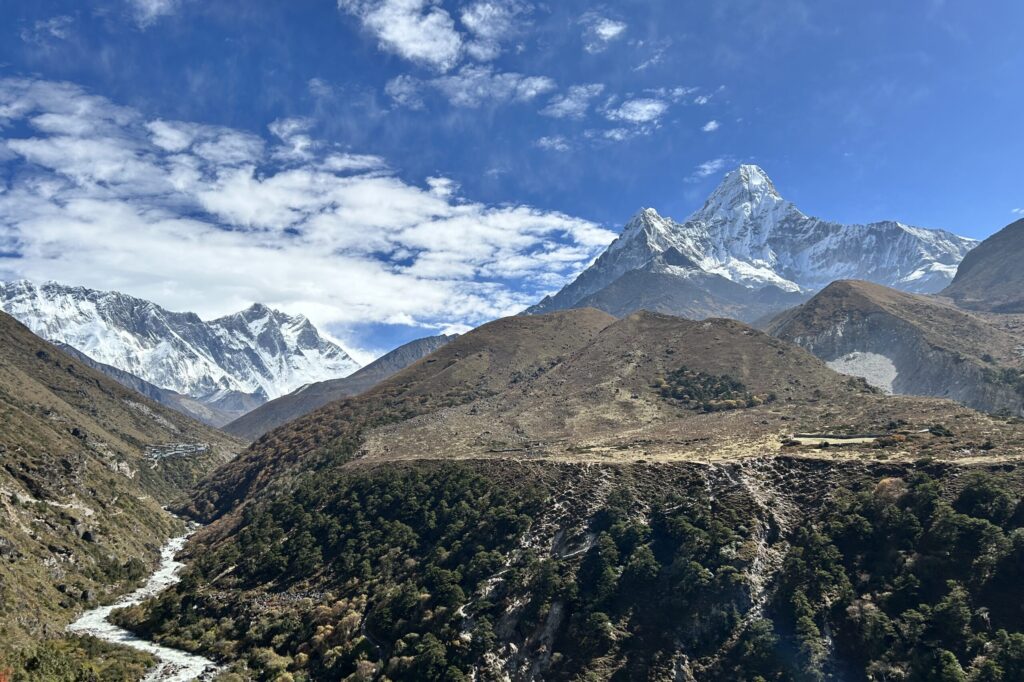
Everest Base Camp.
Main Highlights: What You Absolutely Can’t Miss
The Everest Base Camp Trek is not just a journey; it’s an odyssey through some of the most breathtaking landscapes on the planet. As you lace up your boots and embark on this lofty adventure, here are the main highlights that you absolutely can’t miss along the way to the legendary base camp.
1. Namche Bazaar
Your adventure begins in Namche Bazaar, a vibrant Sherpa village that serves as the gateway to the Everest region. Nestled in a crescent-shaped valley, this bustling hub is famous for its colorful markets and warm hospitality. Take time to acclimatize here and explore the local culture. Don’t miss the Sagarmatha National Park Museum, which offers stunning views of Everest and a glimpse into the rich heritage of the Sherpa people.
2. Tengboche Monastery
A must-visit on your trek is the Tengboche Monastery, the largest Buddhist monastery in the Khumbu region. Perched at 3,867 meters (12,687 feet), it offers not only spiritual insight but also breathtaking views of the surrounding peaks, including the majestic Ama Dablam. Trekkers often stop here to light candles and seek blessings before continuing their ascent.
3. Kala Patthar
A detour to Kala Patthar is essential for any trekker. Standing at 5,550 meters (18,208 feet), this viewpoint is renowned for its panoramic vistas of Mount Everest and the Khumbu Icefall. The climb to Kala Patthar is challenging, but the reward is an unforgettable sunrise view that bathes the peaks in golden light—a moment sure to be etched in your memory.
4. Gorak Shep
This small settlement, located at the foot of Kala Patthar, is the last stop before reaching Everest Base Camp. While it may feel remote, Gorak Shep holds its own charm and is a vital resting point. Here, you can fuel up on hearty meals and prepare for the final push to EBC. Don’t forget to marvel at the rugged beauty surrounding you, including the remnants of glacial moraines and the stark landscape.
5. Everest Base Camp (EBC)
The ultimate destination of your trek is, of course, Everest Base Camp itself. At an elevation of 5,364 meters (17,598 feet), this iconic spot is where climbers gather before embarking on their summit attempts. While you won’t see the summit of Everest from here, the atmosphere is electric, filled with the dreams and aspirations of climbers from around the world. Capture the moment with photos against the backdrop of the colossal Khumbu Icefall.
6. Nangkar Tsang / Dingboche Viewpoint
For those seeking a quieter experience, the Nangkar Tsang viewpoint offers stunning panoramas of the Khumbu Glacier and the Imja Khola Valley. This detour from Dingboche provides an excellent opportunity for acclimatization while rewarding you with spectacular views and a chance to take in the serene beauty of the Himalayas.
7. Imja Khola Valley
As you trek through the Imja Khola Valley, the scenery shifts dramatically. This area is characterized by its unique glacial features and the tranquil flow of the river. Take a moment to pause and reflect on the natural beauty surrounding you, and enjoy the sound of the rushing water as it accompanies your journey.
8. The Khumbu Icefall
One of the most awe-inspiring sights along the trek is the Khumbu Icefall, the first major obstacle for climbers attempting to reach the summit of Everest. The towering seracs and crevasses create an otherworldly landscape that you can admire from the Base Camp. It’s a powerful reminder of the challenges faced by those who dare to summit the world’s highest peak.
9. Local Sherpa Villages
As you traverse the trail, take the time to visit the charming Sherpa villages dotted along the route. From Phakding to Dingboche, each village showcases the rich culture and traditions of the Sherpa people. Engage with locals, sample traditional cuisine, and learn about their way of life in the shadow of the world’s greatest mountain.
10. Stunning Sunsets and Sunrises
Finally, don’t miss the opportunity to witness the breathtaking sunrises and sunsets throughout your trek. The shifting colors on the snow-capped peaks create moments of pure magic that will linger in your heart long after you leave the mountains.
The Everest Base Camp Trek is an adventure of a lifetime, filled with challenges and rewards. Each highlight along the way offers a unique glimpse into the beauty of the Himalayas and the rich culture of the Sherpa people. Prepare to be awed at every turn as you embark on this extraordinary journey.
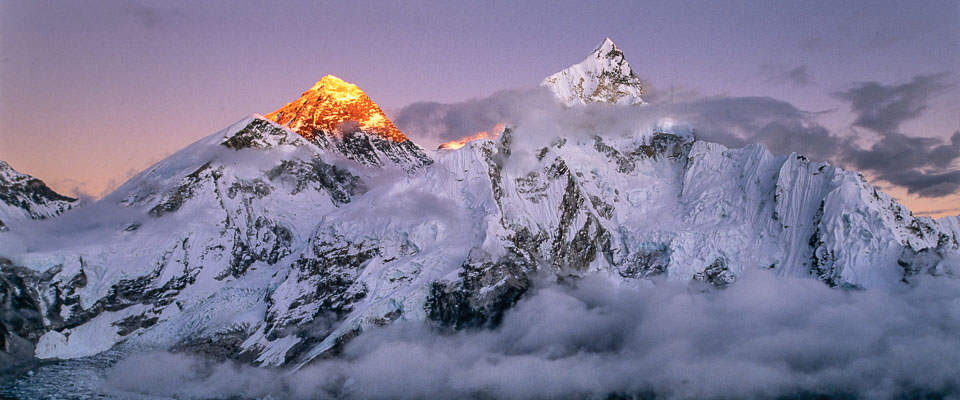
Everest Base Camp.
Planning Your Visit: A Practical Guide
Planning Your Visit: A Practical Guide to Everest Base Camp
Embarking on the Everest Base Camp Trek is not just an adventure; it’s a journey of a lifetime that offers breathtaking landscapes, rich culture, and a chance to challenge your limits. Whether you’re a seasoned trekker or a novice adventurer, this guide will equip you with all the essential information for planning your visit to one of the world’s most iconic destinations.
Best Time to Trek
The ideal time for the Everest Base Camp Trek is during the pre-monsoon season in spring (March to May) and the post-monsoon season in autumn (September to November). During these months, weather conditions are generally stable with clear skies and moderate temperatures, making for a more enjoyable trekking experience. However, be prepared for colder temperatures as you ascend, especially during the winter months when snow and ice can cover parts of the trail.
Getting There
Most trekkers begin their journey from Kathmandu, the vibrant capital of Nepal. From there, you will take a scenic flight to Lukla, the gateway to the Everest region. The flight offers stunning views of the Himalayas, but be aware that it can be delayed due to weather conditions.
Trekking Itinerary
The trek typically takes 12 to 14 days, including acclimatization days. Here’s a sample itinerary to give you an idea of what to expect:
- Day 1: Fly from Kathmandu to Lukla, trek to Phakding.
- Day 2: Trek from Phakding to Namche Bazaar.
- Day 3: Acclimatization day in Namche Bazaar (explore and hike to Everest View Hotel).
- Day 4: Trek to Tengboche.
- Day 5: Trek to Dingboche.
- Day 6: Acclimatization day in Dingboche (hike to Nagarjun Hill).
- Day 7: Trek to Lobuche.
- Day 8: Trek to Everest Base Camp, return to Gorak Shep for the night.
- Day 9: Early morning hike to Kala Patthar for sunrise views, then trek back to Pheriche.
- Day 10: Trek to Namche Bazaar.
- Day 11: Trek back to Lukla.
- Day 12: Fly back to Kathmandu.
Physical Preparation
The trek is classified as advanced, requiring a good level of fitness and stamina. Prior to your trip, it’s advisable to engage in cardiovascular training, strength training, and practice hiking in similar terrain. Acclimatization is crucial; be prepared to ascend slowly and take rest days to help your body adjust to the high altitude.
What to Pack
Essential gear for the trek includes:
- Trekking Boots: Well-fitted and broken-in.
- Clothing: Layered clothing for varying temperatures, including a waterproof jacket, thermal layers, and trekking pants.
- Backpack: A comfortable daypack for carrying essentials.
- Sleeping Bag: Rated for cold temperatures.
- Water Purification: Tablets or a filter to ensure clean drinking water.
- First Aid Kit: Include altitude sickness medication like Diamox.
- Trekking Poles: Helpful for stability on uneven terrain.
- Sun Protection: Sunscreen, sunglasses, and a wide-brimmed hat.
Food and Accommodations
Along the trek, you will find a mix of teahouses and lodges offering basic accommodations and meals. The menu typically includes local dishes like dal bhat (lentil soup with rice), momo (dumplings), and various noodle dishes. While the food is generally nutritious, it’s wise to carry some snacks for energy during long trekking days.
Altitude and Acclimatization
Everest Base Camp sits at an altitude of 17,598 feet (5,364 meters), which poses a risk for altitude sickness. Symptoms can vary, so it’s essential to listen to your body. Hydration is key; drink plenty of water throughout the trek. Be prepared to take acclimatization days seriously—they’re not just rest days but vital for your health.
Porter Services
Consider hiring a porter to carry your gear; this can enhance your trekking experience by allowing you to focus on the journey rather than the weight of your backpack. Porters can be hired in Kathmandu or Lukla, and it’s beneficial to negotiate rates in advance.
Travel Visas and Permits
Most international travelers will need a tourist visa to enter Nepal, which can be obtained on arrival at Kathmandu’s Tribhuvan International Airport or through the Nepali embassy in your home country. Additionally, you will require a TIMS card (Trekkers’ Information Management System) and a Sagarmatha National Park entry permit, which can be arranged through a trekking agency or in Kathmandu.
Conclusion
The Everest Base Camp Trek is a profound experience that combines adventure, culture, and stunning natural beauty. With careful planning and preparation, you’ll be ready to tackle this legendary trek and create memories that will last a lifetime. Pack your sense of adventure, and prepare to step into the heart of the Himalayas!
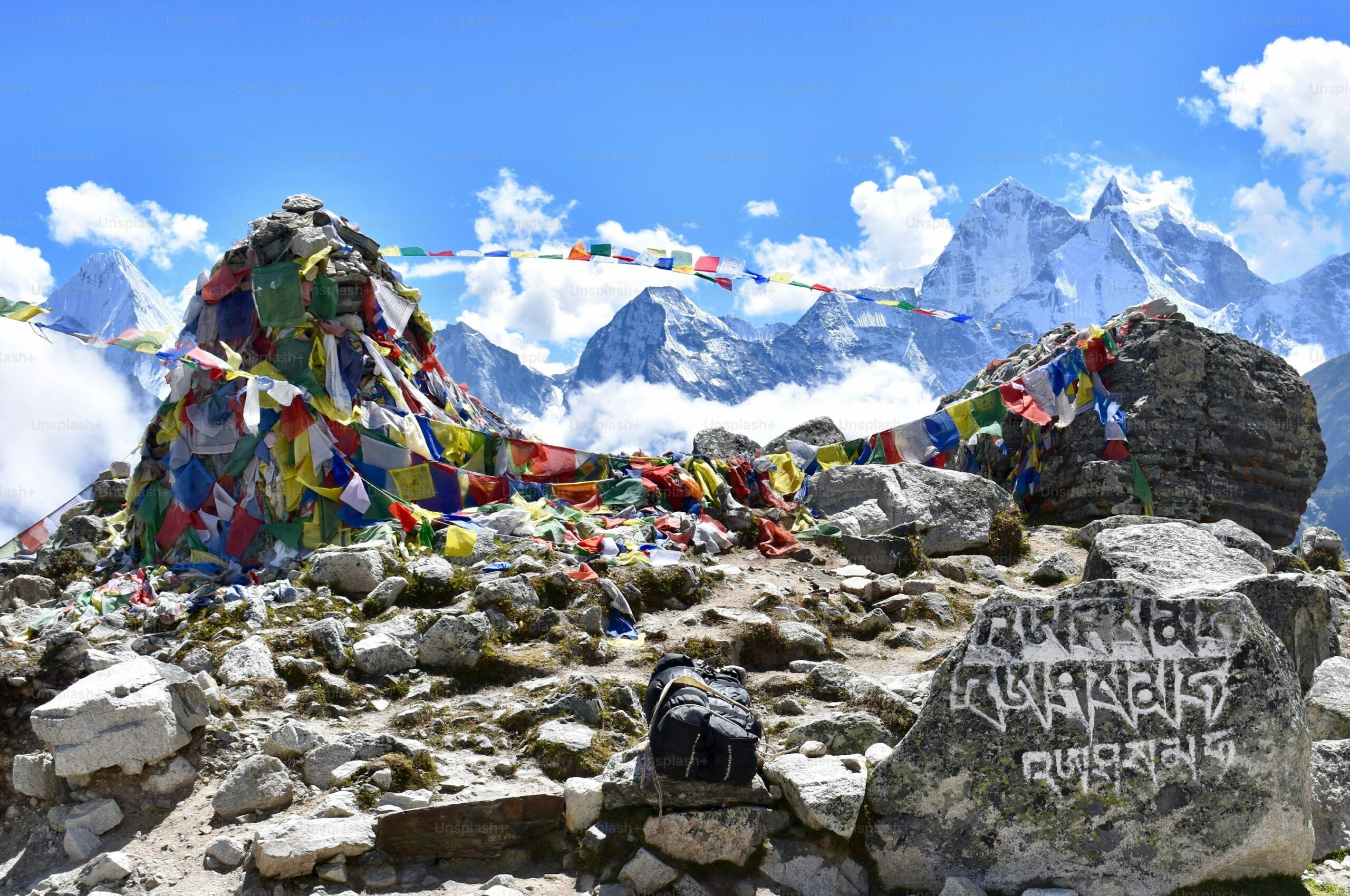
Everest Base Camp.
Tickets: Prices, Booking, and Tips
Planning your trek to Everest Base Camp (EBC) includes more than just packing your gear and training your body; it requires careful consideration of ticket prices, booking options, and practical tips to ensure a smooth journey. Here’s everything you need to know to navigate the logistics of this iconic adventure.
Pricing Overview
The cost of trekking to Everest Base Camp can vary significantly depending on your choices. Here’s a general breakdown:
-
Guided Tours: Most international travelers opt for guided tours, which include a complete package of accommodation, meals, permits, and often, guides. Prices for all-inclusive packages start around US$4,295. This price may fluctuate based on the season, group size, and the level of service provided.
-
Permits: Regardless of your trek style, you will need to pay for necessary permits. The main permits include:
- Sagarmatha National Park Entry Permit: Approximately US$30.
- Trekking Information Management System (TIMS) Card: Roughly US$20.
These fees are typically included in guided tour packages, but if you’re trekking independently, make sure to budget for them.
- Additional Costs: Keep in mind that expenses such as meals, tips for guides and porters, and personal gear rentals can add to your overall budget. Expect to spend about US$15-30 per day on meals if you’re trekking independently.
Booking Your Trek
Booking your trek to Everest Base Camp can be done in several ways:
-
Through a Travel Agency: This is the most convenient option for international travelers. Numerous agencies specialize in EBC treks, offering a variety of packages that range from budget to luxury. Research and compare reviews to find a reputable agency that suits your needs.
-
Directly with Local Operators: If you prefer a more personal touch, consider booking directly with local trekking companies in Nepal. This can often be more cost-effective and allows for better communication regarding your specific requests.
-
Online Booking Platforms: Websites like Bookmundi or Viator provide an array of trekking options, allowing you to read reviews and compare prices from different agencies.
-
In-Person in Kathmandu: If you’re already in Nepal, you can book your trek once you arrive in Kathmandu. Visit Thamel, the tourist hub, where many agencies are located. This option allows you to negotiate prices and ask questions face-to-face.
Tips for a Smooth Experience
-
Book Early: If you plan to trek during peak seasons (March-May and September-November), it’s wise to book your tour well in advance. These months see heavy traffic on the trails, and securing your spot early can ensure better accommodations and guides.
-
Consider Travel Insurance: Given the potential for altitude sickness and the remote nature of the trek, obtaining robust travel insurance is crucial. Ensure it covers trekking at high altitudes and includes medical evacuation.
-
Stay Flexible: Weather conditions in the Himalayas can change rapidly, so it’s essential to remain flexible with your itinerary. Allow extra days in your schedule to accommodate for any unforeseen delays.
-
Prepare for Altitude: Acclimatization is key to a successful trek. Follow your guide’s advice on pacing yourself and take the acclimatization days seriously. Drinking plenty of water and considering AMS medication can also help.
-
Pack Smart: Ensure you have the right gear for both the trek and the weather conditions you might face. Investing in quality trekking boots and layers will make a significant difference in your comfort level.
By understanding the costs involved, exploring your booking options, and following these tips, you’ll be well on your way to experiencing the breathtaking beauty and awe-inspiring heights of Everest Base Camp. Happy trekking!
How to Get There: A Complete Transportation Guide
Reaching Everest Base Camp is an adventure that begins long before you lace up your hiking boots. The journey to one of the world’s most iconic trekking destinations requires careful planning and understanding of the transportation options available to you. Here’s how to navigate your way to the foothills of Mount Everest.
Getting to Nepal
Fly to Kathmandu
Most international travelers will begin their journey in Kathmandu, the vibrant capital of Nepal. Tribhuvan International Airport serves as the main gateway, with numerous airlines connecting from major cities around the world. Upon arrival, you’ll want to spend at least a day or two exploring the rich culture and history of this fascinating city, which is filled with temples, markets, and friendly locals.
From Kathmandu to Lukla
Domestic Flight to Lukla
The next leg of your journey is a scenic flight to Lukla, the closest airport to Everest Base Camp. These flights are offered by several domestic airlines, including Tara Air and Yeti Airlines. The flight from Kathmandu to Lukla takes about 30-40 minutes and provides stunning views of the Himalayan ranges. However, flights can be subject to weather conditions, so be prepared for potential delays or cancellations. It’s advisable to book your flight well in advance, especially during peak trekking seasons (spring and autumn).
- Tip: Schedule your flight early in the morning to minimize the chances of cancellations due to weather.
Trekking from Lukla to Everest Base Camp
Begin Your Trek
Once you arrive in Lukla, the adventure truly begins. The trek to Everest Base Camp typically starts with a descent into the Dudh Koshi Valley and then a steady ascent towards Namche Bazaar, the first major stop on the trek. The entire trek to EBC is approximately 80 miles (130 km) roundtrip and usually takes about 12-14 days to complete, including acclimatization days.
Trail Details
The trek involves daily hikes ranging from 8-10 miles (13-16 km) each day, depending on your itinerary and acclimatization needs. Expect a mix of moderate to challenging terrain, including steep climbs and occasional suspension bridge crossings.
- Acclimatization Days: Be sure to factor in rest days, especially in Namche Bazaar and Dingboche, to help your body adjust to the altitude.
Return Journey
Back to Lukla
Upon reaching Everest Base Camp, you’ll retrace your steps back to Lukla, enjoying the stunning views one last time. The return trek usually takes about 7-8 days, and you might want to take your time, soaking in the sights and sounds of the Himalayas.
Flight from Lukla to Kathmandu
Once back in Lukla, you’ll take a domestic flight back to Kathmandu. As with your initial flight, be prepared for delays and book your return flight a few days in advance, especially if your overall itinerary is tight.
Travel Tips
- Book in Advance: Secure your domestic flights and trekking permits early, especially during peak seasons.
- Travel Insurance: Ensure you have comprehensive travel insurance that covers trekking at high altitudes.
- Local Guides and Porters: Hiring a local guide or porter can enhance your experience, assist with logistics, and ensure you stay safe on the trails. Many trekking companies offer all-inclusive packages that cover flights, guides, accommodation, and meals.
Conclusion
Getting to Everest Base Camp is a journey filled with excitement and breathtaking landscapes. Whether you’re flying into Lukla or trekking through the Khumbu region, each step is a part of an unforgettable adventure. So gear up, prepare for the trek of a lifetime, and get ready to stand at the base of the world’s highest peak!
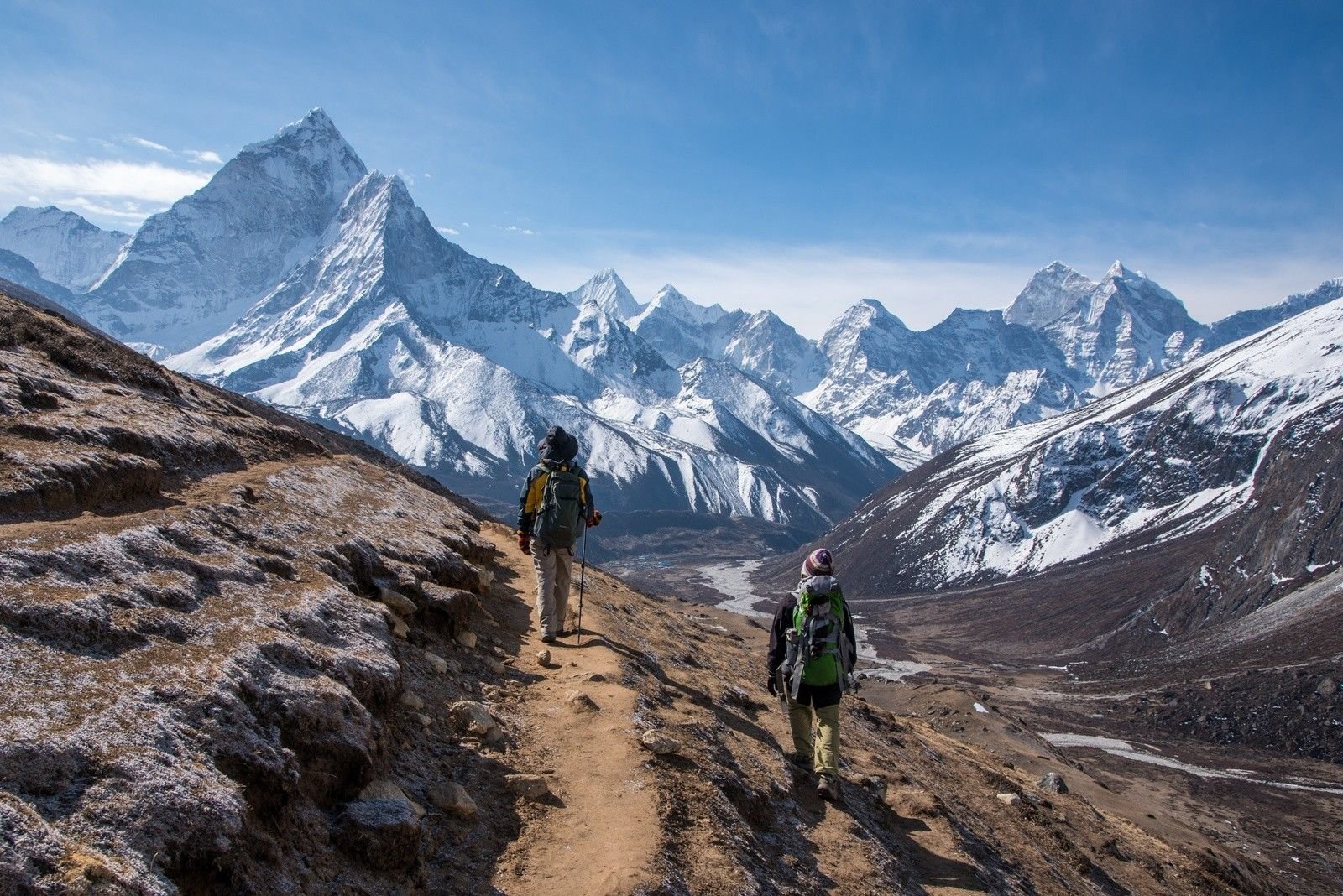
Everest Base Camp.
Local Cuisine and Accommodation Nearby
The Everest Base Camp Trek is not just a journey through breathtaking landscapes; it’s also an opportunity to immerse yourself in the rich local culture and cuisine of the Sherpa people. As you make your way through the Khumbu region, you’ll find a variety of accommodations and delightful food options that add an extra layer to your trekking experience.
Culinary Delights in the Khumbu Region
Dahl Bhat: This traditional Nepalese dish, consisting of lentil soup (dahl) and rice (bhat), is a staple among trekkers and locals alike. It’s nutritious and provides the energy needed for long days on the trail. Often served with vegetables and sometimes meat, it’s a hearty meal that can be found in most teahouses along the trek.
Tibetan Momos: These delicious dumplings, filled with either meat or vegetables, are a popular snack on the trek. They are often steamed or fried and served with a spicy dipping sauce, making them a perfect treat after a long day of hiking.
Sherpa Stew: A warming and wholesome dish, Sherpa stew is typically made with potatoes, carrots, and seasonal vegetables, simmered in broth and served with bread or rice. It’s a comforting meal that many trekkers enjoy, especially at higher altitudes.
Apple Pie: Don’t miss the chance to indulge in a slice of homemade apple pie, a delightful surprise in the mountains! Many teahouses pride themselves on their baking skills, and this sweet treat is often a favorite among trekkers.
Cozy Accommodations
Teahouses: The most common form of accommodation along the EBC trail are teahouses, which offer basic lodging and meals. They provide a rustic charm, with simple rooms and communal dining areas where trekkers can share stories of their daily adventures.
-
Namche Bazaar: As the vibrant hub of the Khumbu region, Namche boasts various teahouses like The Everest View Hotel and Namche Lodge, which offer comfortable beds and stunning views of the surrounding mountains.
-
Gorak Shep: This is the last stop before reaching Base Camp. Teahouses here, such as Gorak Shep Lodge, provide basic amenities but are an essential part of the trek, allowing trekkers to rest and recharge.
-
Dingboche: Known for its higher altitude, Dingboche features cozy teahouses like Hotel Good Luck, where you can enjoy warm hospitality and delicious meals while acclimatizing.
Tips for a Comfortable Stay
-
Book in Advance: During peak trekking seasons (spring and autumn), teahouses can fill up quickly. It’s advisable to book ahead, especially if you’re traveling in a group.
-
Bring a Sleeping Bag: While teahouses provide bedding, a lightweight sleeping bag can enhance your comfort, particularly in colder months.
-
Be Prepared for Basic Facilities: Accommodations along the trek may lack some modern amenities, so be ready for shared bathrooms and limited hot water.
By embracing the local cuisine and choosing the right accommodations, you’ll enrich your experience on the Everest Base Camp Trek, creating lasting memories along the way. Enjoy the flavors and the warmth of Sherpa hospitality as you embark on this incredible adventure!
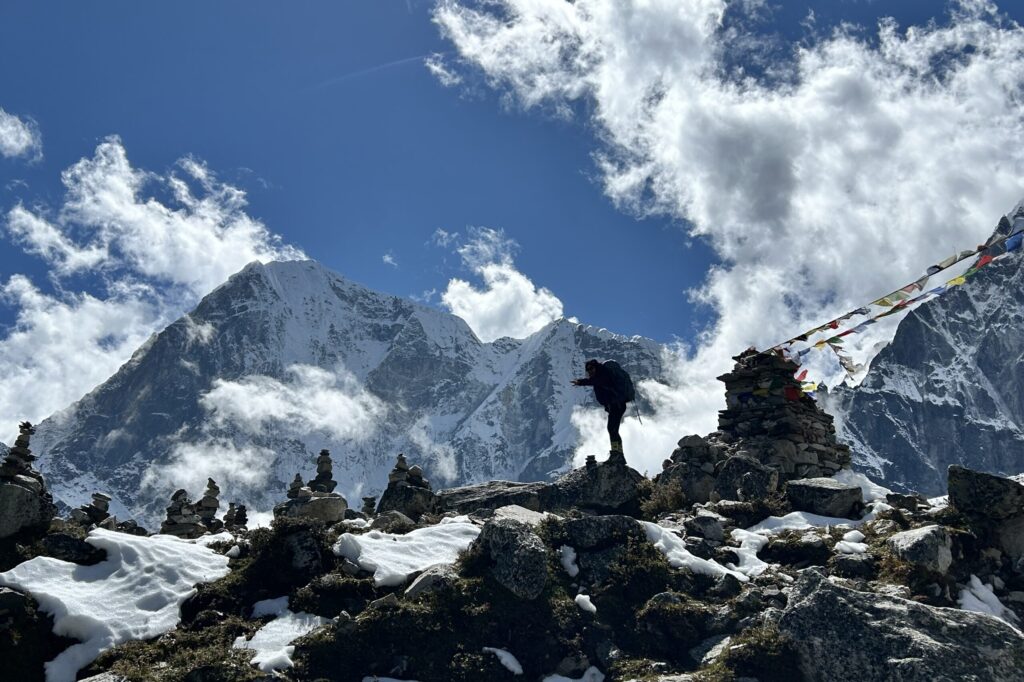
Everest Base Camp.
Frequently Asked Questions
Frequently Asked Questions about the Everest Base Camp Trek
-
What is the best time to trek to Everest Base Camp?
The ideal times to embark on the Everest Base Camp Trek are during the spring (March to May) and autumn (September to November) months. These seasons offer the most stable weather conditions, clearer skies, and milder temperatures, making for a more enjoyable trekking experience. -
Do I need a guide for the trek?
While it is possible to trek to Everest Base Camp independently, hiring a guide is highly recommended. Not only do they possess invaluable local knowledge, but they also assist with navigation, help manage altitude sickness, and ensure your safety throughout the trek. -
What type of fitness level do I need for the trek?
The Everest Base Camp Trek is considered physically demanding, requiring a good level of fitness. Regular hiking or trekking experience is beneficial, but you don’t need technical climbing skills. Preparation through cardio exercises and hiking in varied terrains will enhance your stamina and adaptability. -
How much does the trek cost?
Trekking to Everest Base Camp can range from about $4,295 for an all-inclusive guided tour to lower prices for self-organized treks. Costs will vary based on the type of accommodation, meals, and additional services you choose. Be sure to budget for permits and equipment if you’re going independently. -
What kind of accommodations can I expect?
Accommodations during the trek typically include tea houses or lodges that provide basic amenities. Rooms are usually shared, and you can expect communal dining areas serving local cuisine. The higher you trek, the more basic the facilities may become, so be prepared for changes in comfort levels. -
What should I pack for the trek?
Essential gear includes sturdy trekking shoes, layered clothing for variable weather, a good sleeping bag, and a daypack. Don’t forget trekking poles, a water purification system, and sunscreen. Additionally, consider packing altitude sickness medication and a first aid kit for any unforeseen circumstances. -
Is altitude sickness a concern on this trek?
Yes, altitude sickness (Acute Mountain Sickness) is a legitimate risk when trekking to Everest Base Camp due to the high elevations involved. To mitigate this risk, acclimatization days are included in most itineraries, and it’s essential to stay hydrated and listen to your body throughout the trek. -
How do I get to the starting point of the trek?
The trek typically begins with a flight from Kathmandu to Lukla, which is a small airport in the Khumbu region. From Lukla, you’ll start your trek towards Everest Base Camp, with the first leg of the journey leading you to the vibrant village of Namche Bazaar. Flights can be booked through local travel agencies or your trekking company.
Final Thoughts on Your Trip
As you reflect on your remarkable journey to Everest Base Camp, it’s essential to recognize that this trek is more than just a physical challenge; it is a transformative experience that will resonate within you long after you return home. The breathtaking vistas, vibrant Sherpa culture, and the indomitable spirit of adventure you encounter along the trail will stay etched in your memory, igniting a passion for exploration that may inspire future travels.
The camaraderie forged with fellow trekkers and the stories shared around a warm meal in a cozy teahouse will remind you of the universal connections we share as travelers. Each step taken on the rugged paths of the Khumbu region is a testament to your determination and resilience. As you stood at the foot of the world’s highest peak, surrounded by the majesty of the Himalayas, you not only accomplished a personal goal but also embraced the profound beauty and spirit of the natural world.
Whether you sought to challenge yourself, fulfill a lifelong dream, or simply soak in the extraordinary landscapes, the Everest Base Camp trek offers a unique opportunity for self-discovery. As you leave behind the towering peaks and tranquil valleys, carry with you the lessons learned and the inspiration gained. Remember, the journey may have ended, but the spirit of adventure is just beginning. Keep exploring, keep dreaming, and let the echoes of Everest inspire your next great adventure.